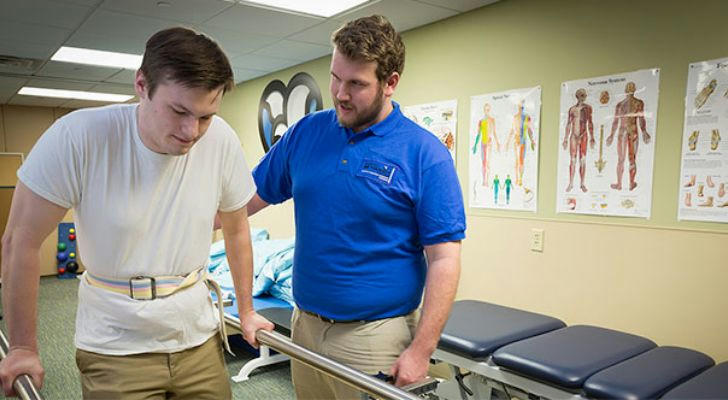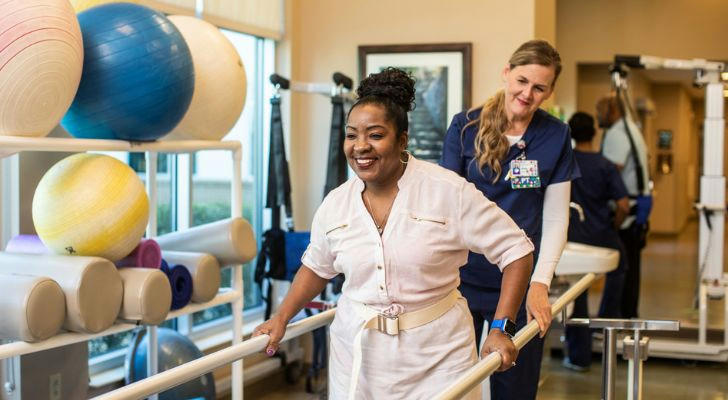Physical Therapy Assistants: Essential Roles in Rehabilitation and Recovery
Physical Therapy Assistants (PTAs) are integral members of the healthcare team, playing a key role in helping patients recover from injuries, surgeries, and physical impairments. PTAs work under the supervision of physical therapists to implement rehabilitation programs that improve mobility, relieve pain, and restore function. Whether it’s assisting a patient after surgery or helping someone manage a chronic condition, PTAs make a significant difference in their patients' quality of life.
Let’s explore the critical role of PTAs, the skills they need, and how they contribute to the recovery process.

Why PTAs Are Essential
Facilitating Rehabilitation and Recovery
PTAs work directly with patients to help them recover from a wide range of conditions, such as post-surgical rehabilitation, sports injuries, and neurological disorders. Their primary role is to implement treatment plans developed by physical therapists, providing hands-on therapy and ensuring that patients follow their rehabilitation exercises correctly.
By assisting patients with exercises, manual therapy techniques, and using various modalities, PTAs help patients regain strength, flexibility, and movement, ultimately enabling them to return to their daily activities.
Promoting Long-Term Health and Mobility
The work of a PTA doesn't just focus on short-term recovery—it also aims to improve the long-term health and mobility of patients. By educating patients on proper movement techniques and preventive exercises, PTAs help patients avoid future injuries and maintain their physical well-being over time.
Regular physical therapy helps manage chronic conditions such as arthritis or back pain, allowing patients to live more comfortably and with greater independence.

Key Responsibilities of a PTA
Implementing Physical Therapy Treatments
PTAs are responsible for carrying out specific treatments prescribed by physical therapists, including:
• Exercise Programs: Guiding patients through strengthening, stretching, and mobility exercises that are essential to their recovery.
• Manual Therapy: Performing hands-on techniques to improve range of motion, reduce pain, and enhance circulation.
• Modalities: Using tools such as heat, cold, ultrasound, or electrical stimulation to reduce pain and promote healing.
PTAs must closely follow treatment protocols to ensure that patients are receiving the correct interventions and monitoring their progress.
Monitoring Patient Progress
One of the key roles of PTAs is to track the progress of patients over time. This includes:
• Assessing Movement and Function: Regularly evaluating how well a patient is progressing with exercises and whether their condition is improving.
• Modifying Treatment Plans: Working with the physical therapist to adjust treatment plans based on a patient’s progress, ensuring that the interventions remain effective.
• Documenting Outcomes: Keeping detailed records of patient progress and sharing them with the physical therapist to inform future care decisions.
PTAs play a critical role in ensuring that treatment plans are adapted to meet the evolving needs of the patient.
Educating and Motivating Patients
Physical therapy can be challenging, and maintaining motivation is often a key to success. PTAs educate patients on the importance of their rehabilitation exercises and offer encouragement to help them stay committed to their treatment plans. Additionally, PTAs may provide advice on posture, body mechanics, and how to prevent future injuries.
By offering support and guidance, PTAs help patients take an active role in their recovery process, increasing the likelihood of a successful outcome.
Essential Skills for PTAs
Strong Communication and Interpersonal Skills
PTAs must be able to communicate clearly and effectively with patients, physical therapists, and other healthcare providers. They need to listen to patients' concerns, explain treatment plans, and ensure that instructions are followed. Being empathetic and patient is also essential, as many patients may be frustrated or in pain during their rehabilitation.
Physical Stamina and Strength
The role of a PTA can be physically demanding, requiring the ability to assist patients with movement, lift and position them during exercises, and perform manual therapy techniques. Physical stamina and strength are crucial to safely and effectively carrying out these tasks.
Attention to Detail
PTAs must be meticulous in their work, paying close attention to the specific needs and progress of each patient. Ensuring that exercises are performed correctly and safely, as well as adjusting treatment plans as necessary, requires a keen eye for detail.
Knowledge of Anatomy and Physiology
A strong understanding of the human body, including anatomy, physiology, and biomechanics, is essential for PTAs. This knowledge helps them understand how various conditions affect the body and how to effectively assist in recovery.
Steps to Become a PTA
Complete a PTA Education Program: To become a licensed PTA, individuals must complete an accredited physical therapy assistant program, which typically takes two years to complete.
Obtain Certification and Licensure: After completing the education program, aspiring PTAs must pass a licensing exam to practice in their state or country.
Gain Clinical Experience: Clinical internships and hands-on experience are crucial to becoming proficient in providing physical therapy services.
Engage in Continuing Education: PTAs must keep up with new developments in physical therapy and may pursue additional certifications or training to enhance their skills.
Final Thoughts
Physical Therapy Assistants play a vital role in the rehabilitation process, helping patients recover from injuries, surgeries, and chronic conditions. With the right training, skills, and a compassionate approach, PTAs make a lasting impact on their patients' lives by improving mobility, reducing pain, and promoting long-term health.
Supporting Data and Industry Insights
Employment Outlook: The demand for physical therapy assistants is expected to grow by 33% from 2020 to 2030, much faster than the average for other occupations.
Positive Patient Outcomes: Studies show that patients who receive physical therapy early in their recovery process have better outcomes, including faster healing and reduced long-term disability.
Injury Prevention: Physical therapy interventions can reduce the risk of injury by improving strength, balance, and flexibility, especially in older adults.
Becoming a Physical Therapy Assistant is a rewarding career that offers the opportunity to help others regain their physical health and improve their quality of life. If you're passionate about making a difference in patients' recovery and rehabilitation, this could be the perfect career path for you!
